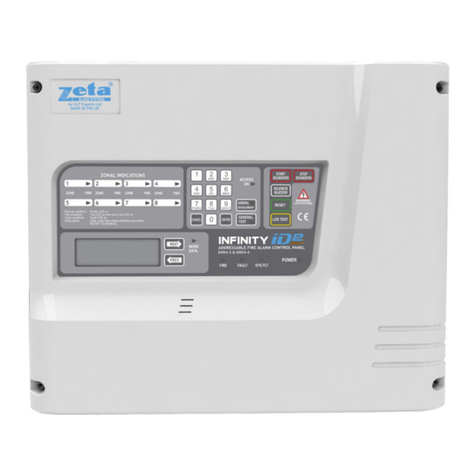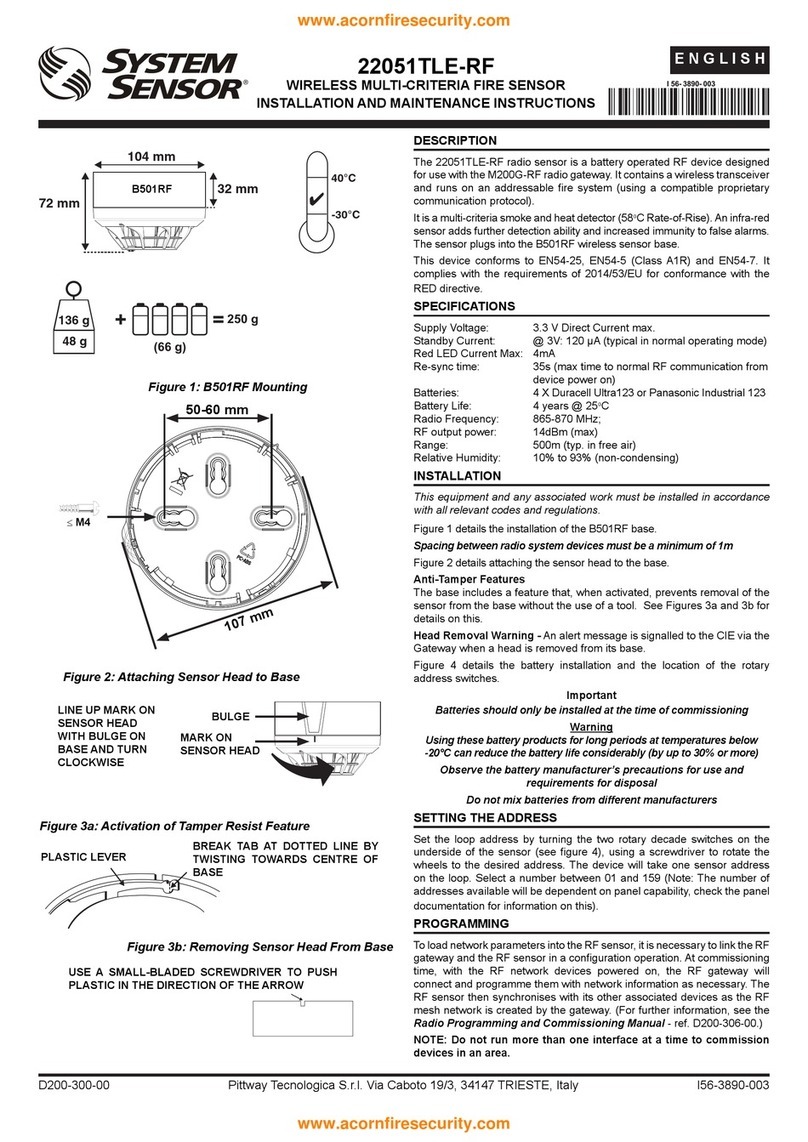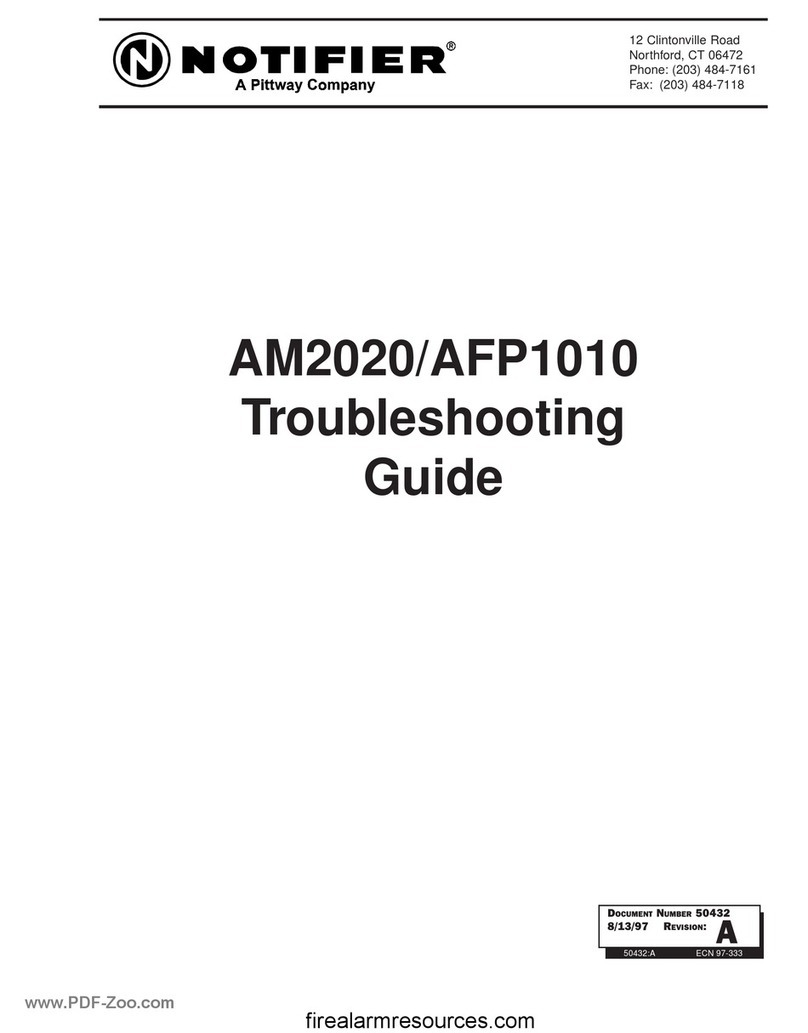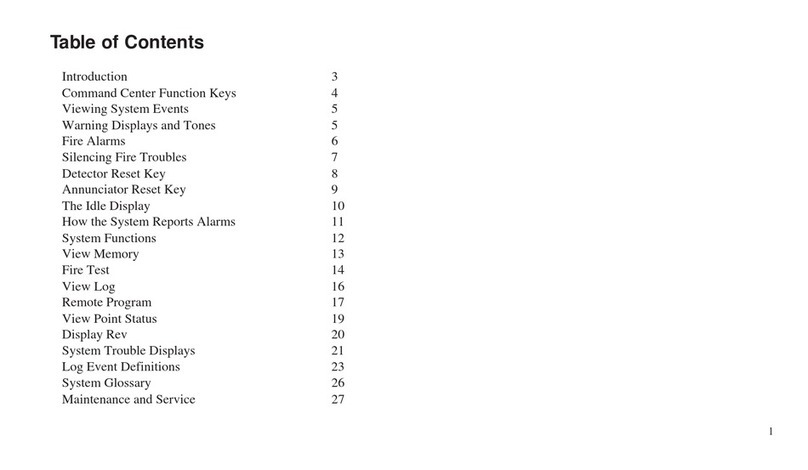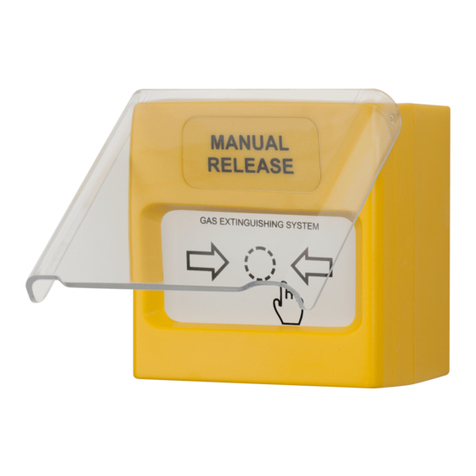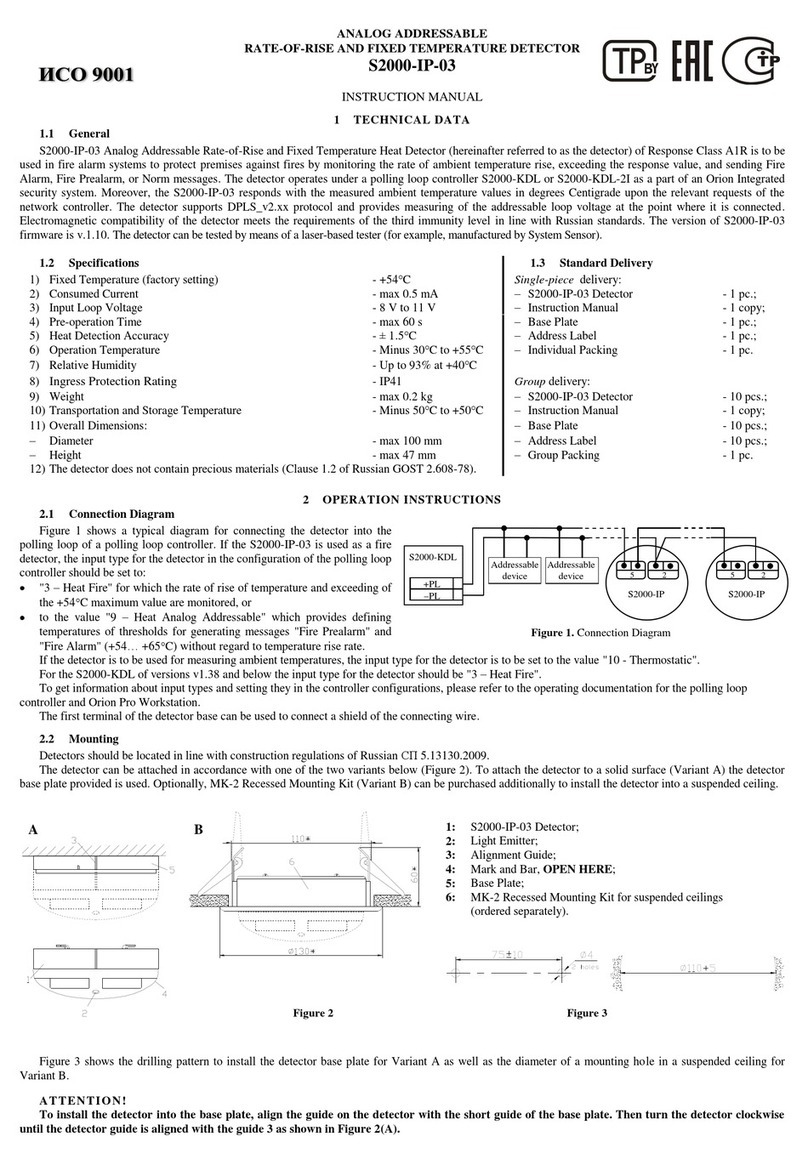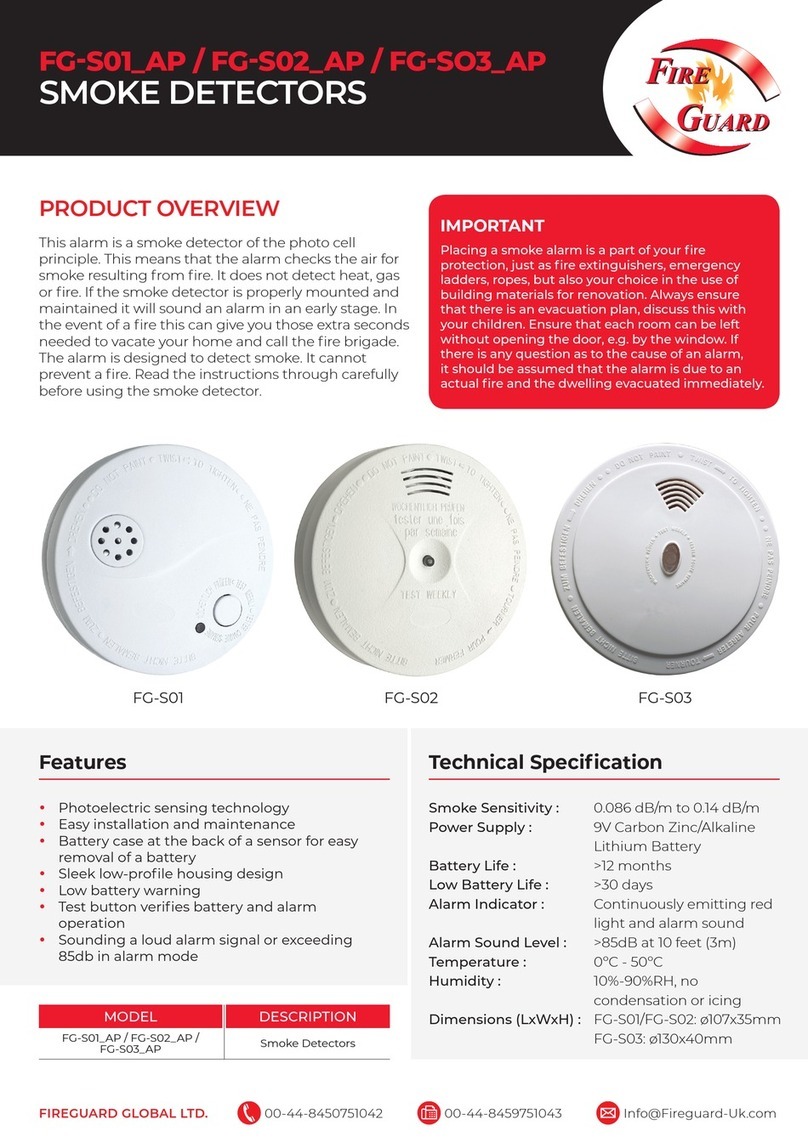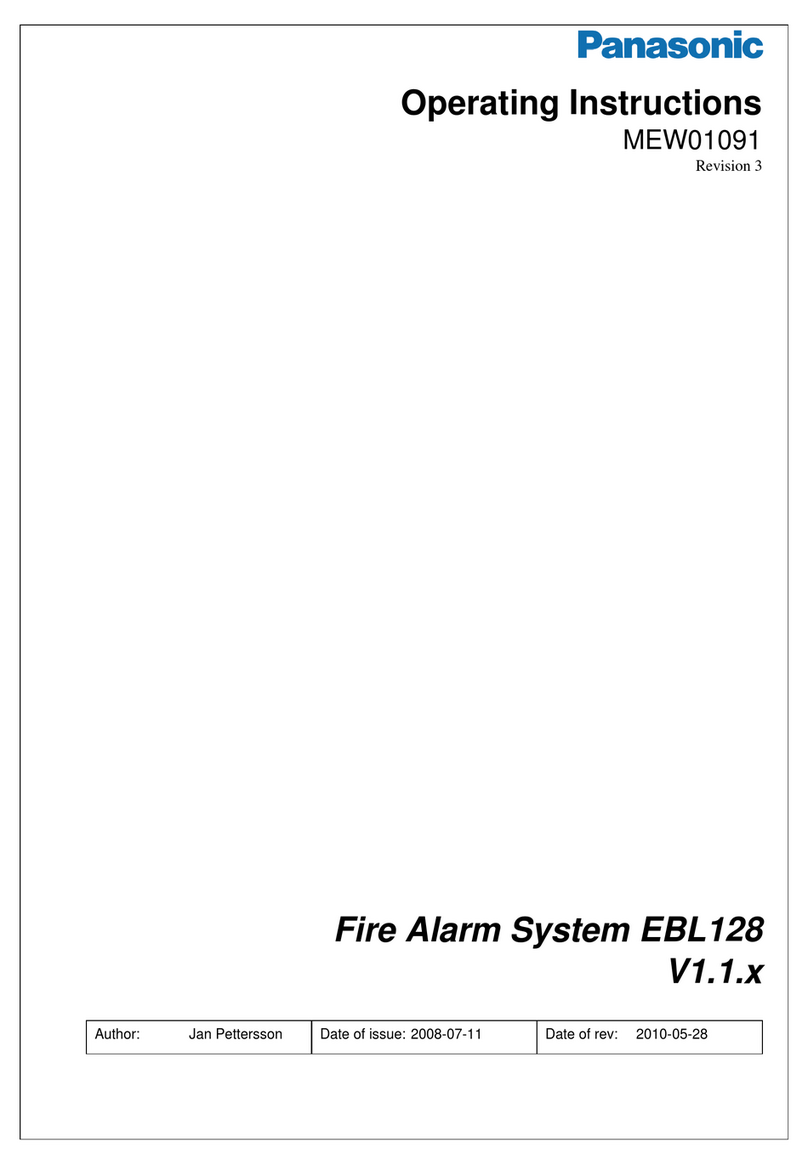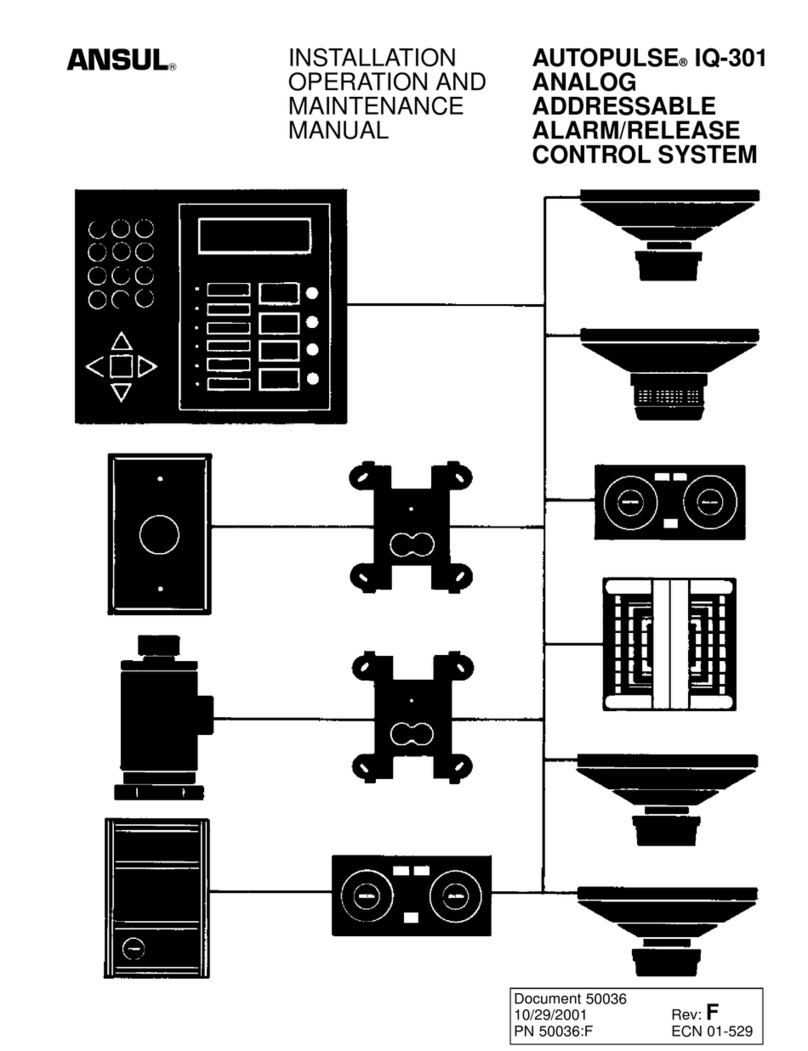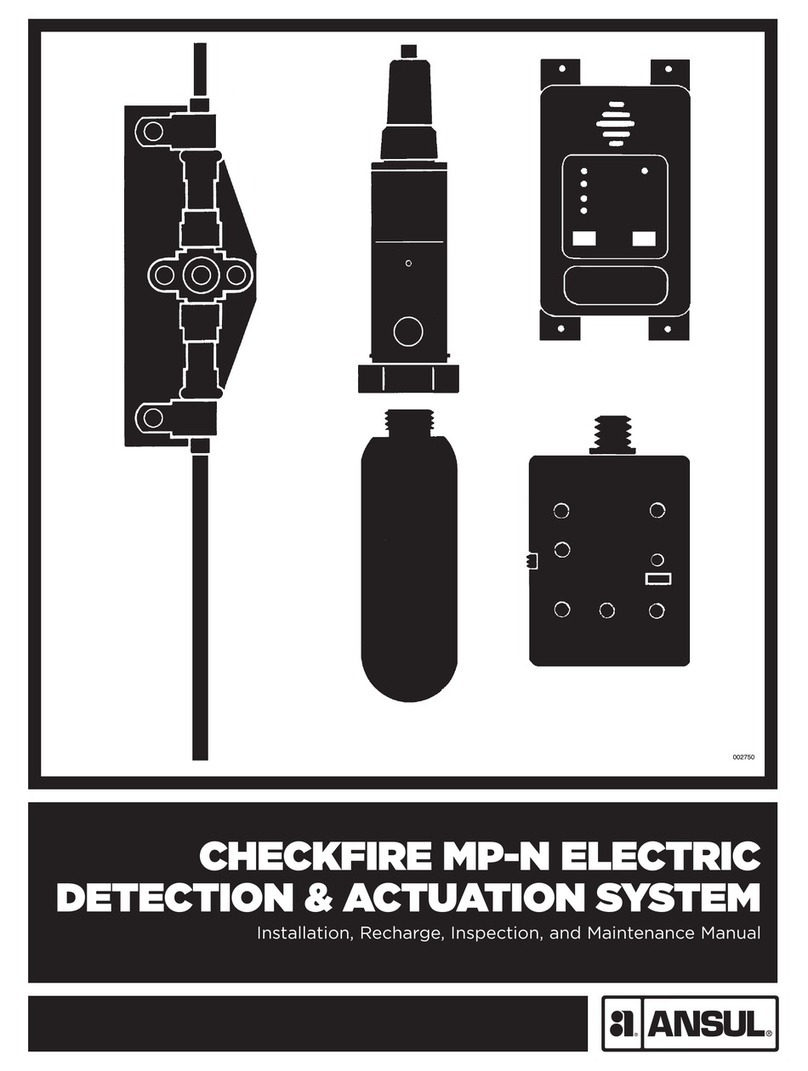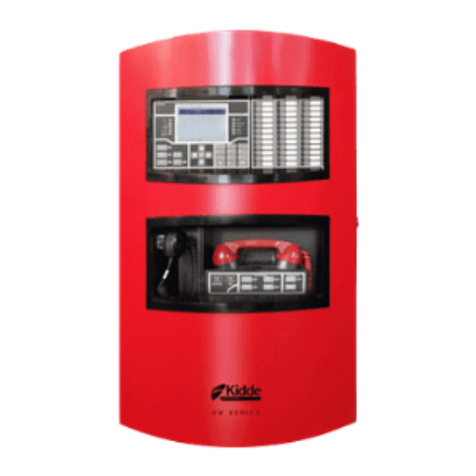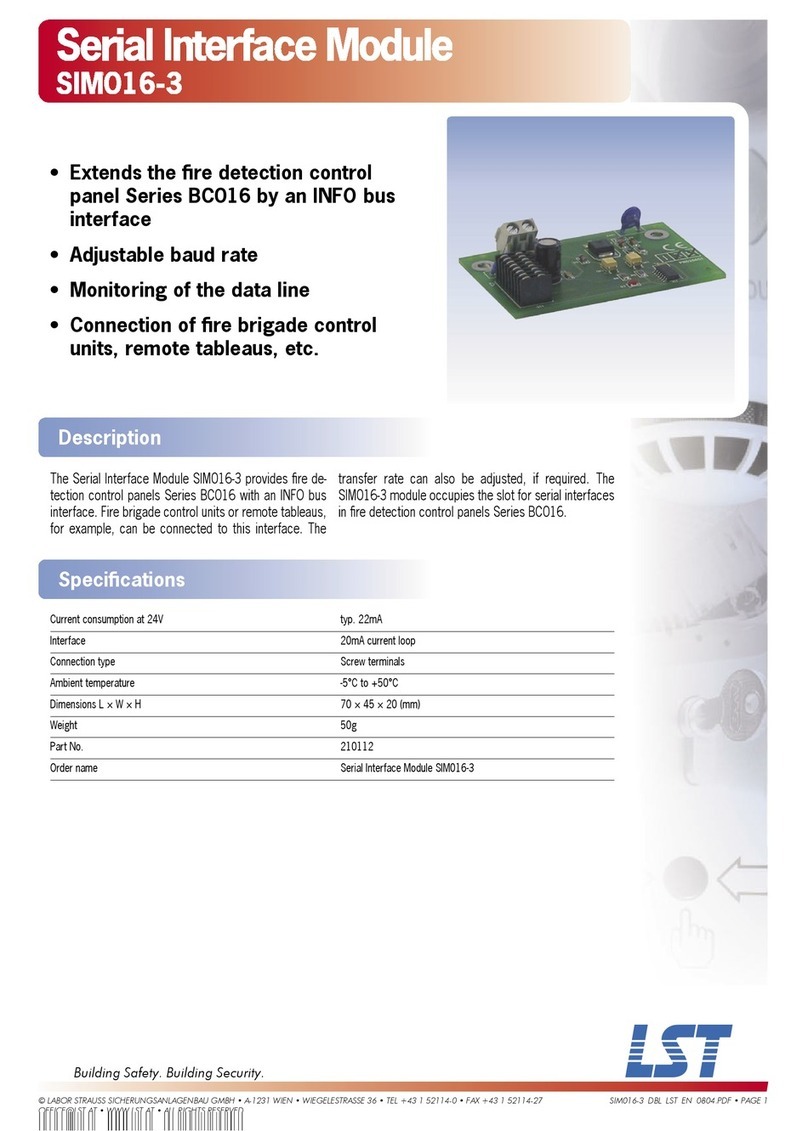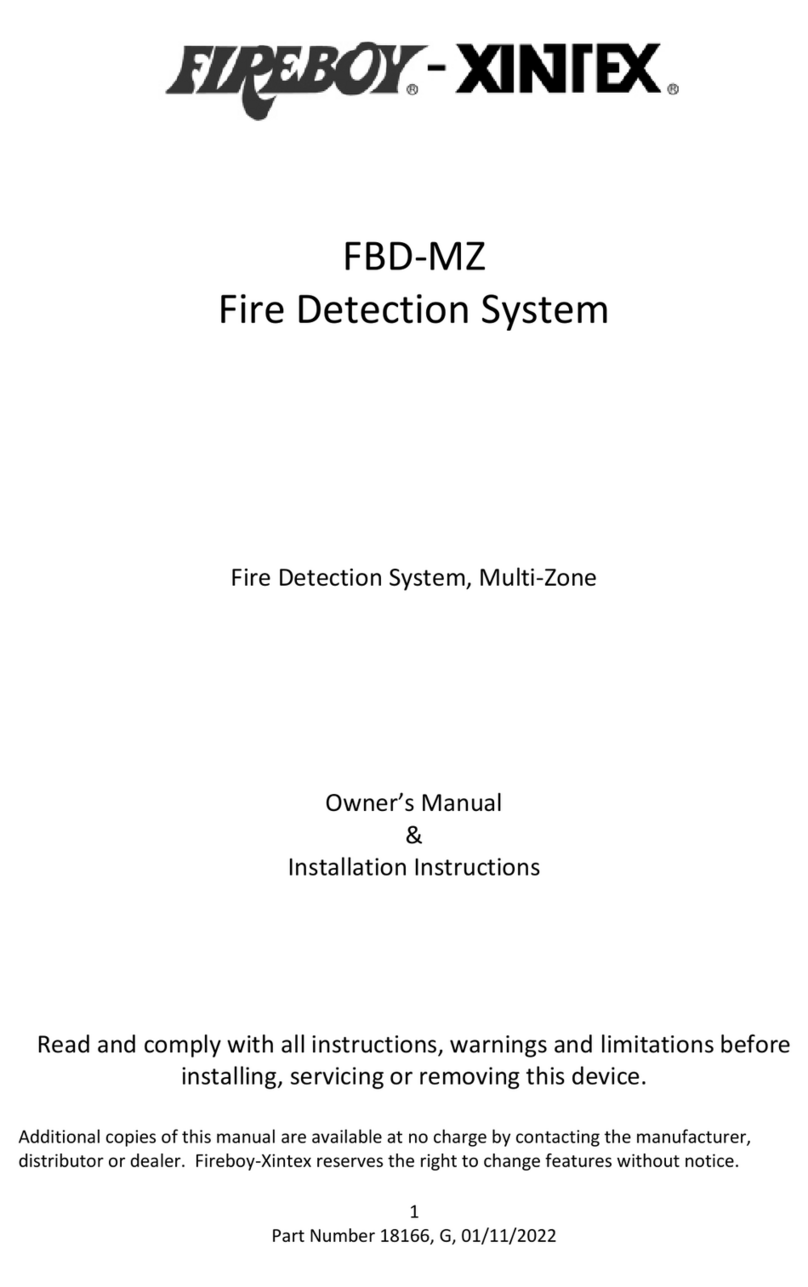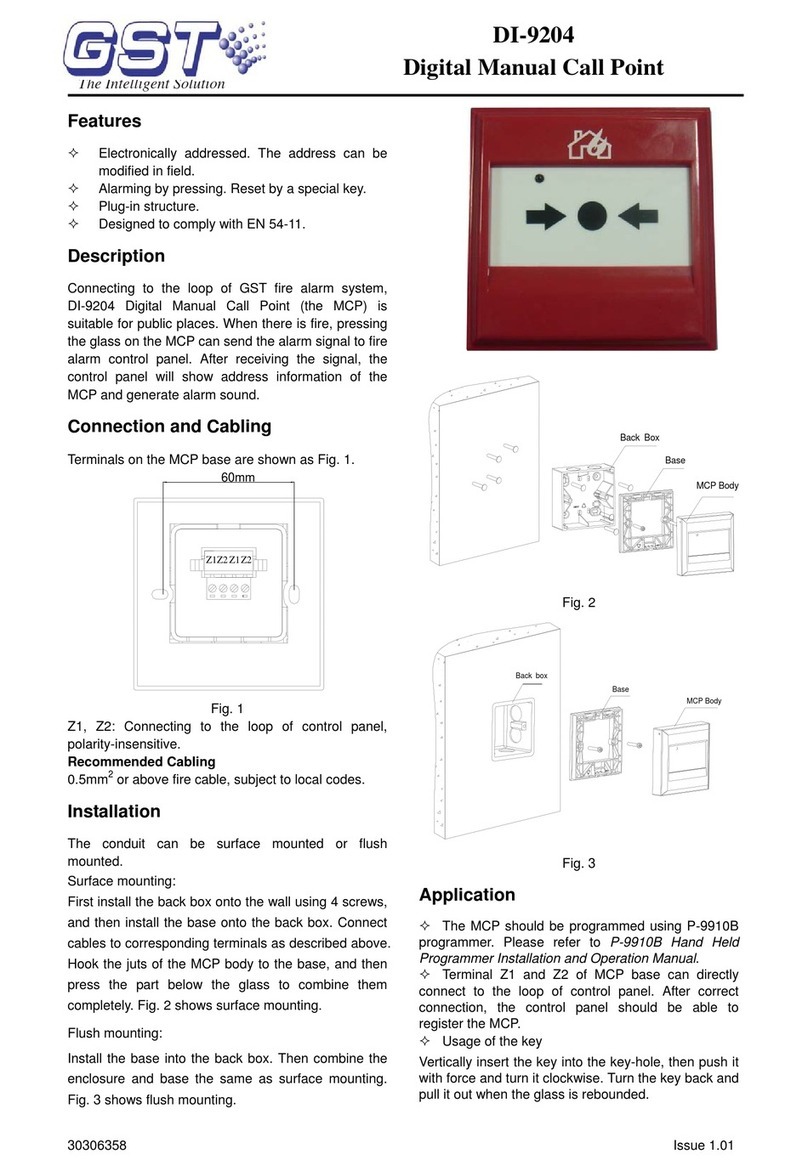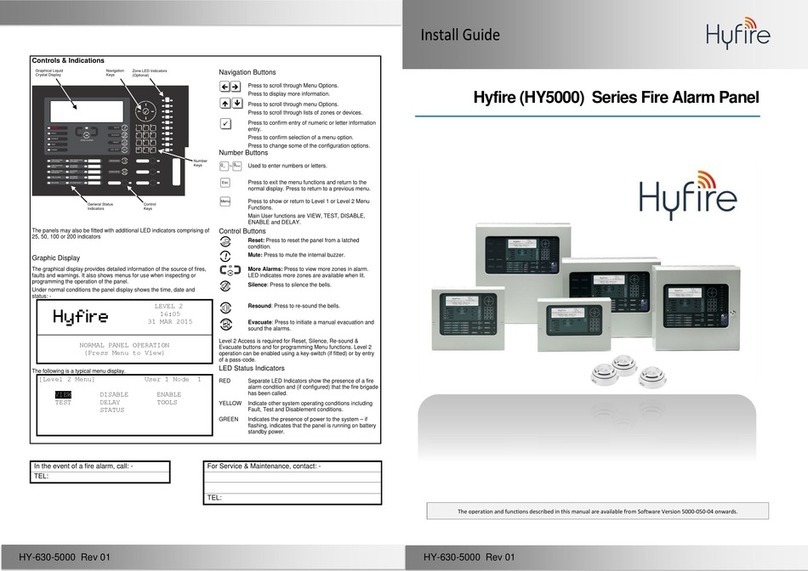
DESIGN AND APPLICATION
The ANSUL R-102 Restaurant Fire Suppression System is
developed and tested to provide fire protection for restaurant
cooking appliances, hoods, and ducts. It is a pre-engineered
group of mechanical and electrical components for installation
by an authorized ANSUL distributor. The basic system consists
of an AUTOMAN regulated release assembly which includes a
regulated release mechanism and a liquid agent storage tank
housed within a single enclosure. Nozzles, detectors, cartridg-
es, liquid agent, fusible links, pulley tees, and pulley elbows are
supplied in separate packages in the quantities needed for each
fire suppression system arrangement.
The system provides automatic actuation; or it can be actuated
manually through a remote manual pull station. The system is
also capable of shutting down appliances at system actuation.
For appliance shutdown requirements, refer to the current ver-
sion of NFPA 17A, “Standard For Wet Chemical Extinguishing
Systems,” and NFPA 96, “Standard For Ventilation Control and
Fire Protection of Commercial Cooking Operations.”
Additional equipment includes: remote manual pull station,
mechanical and electrical gas valves, and electrical switches
for automatic equipment and gas line shut-off. Accessories can
be added, such as alarms, warning lights, etc., to installations
where required.
The R-102 system suppresses fire by spraying the plenum area,
the filters, cooking surfaces, and the exhaust duct system with
a predetermined flow rate of ANSULEX Low pH Liquid Fire
Suppressant. When the liquid agent is discharged onto a cook-
ing appliance fire, it cools the grease surface, and reacts with
the hot grease (saponification) forming a layer of soap-like foam
on the surface of the fat. This layer acts as insulation between
the hot grease and the atmosphere, thus helping to prevent the
escape of combustible vapors.
Exhaust fans in the ventilating system should be left on. The
forced draft of these fans assists the movement of the liquid
agent through the ventilating system, thus aiding in the fire sup-
pression process. These fans also provide a cooling effect in the
plenum and duct after the fire suppression system has been dis-
charged. The system is UL listed with or without fan operation.
Make up or supply air fans, internal to the exhaust hood(s) being
protected, shall be shut down upon system actuation.
Along with the fire suppression system, the total system design
must include hand portable fire extinguisher(s) located within the
cooking/restaurant area that can be used to manually suppress
a fire that may be burning in an unprotected area. Class K extin-
guisher(s) must be provided for hazards where there is a potential
for fires involving combustible cooking media (vegetable or animal
oils and fats). Refer to NFPA 10, “Standard For Portable Fire
Extinguisher,” for additional information.
UL LISTING
The R-102 Restaurant Fire Suppression System has been test-
ed and is listed by Underwriters Laboratories, Inc. as a pre-en-
gineered system. The system is in compliance with UL Test
Standard 300. These tests require extinguishment of fires which
are initiated in deep fat fryers, ranges, griddles, char-broilers,
woks, upright broilers, chain-broilers, filters, plenum chambers,
hoods, and ducts after pre-loading each appliance with a pre-
scribed amount of cooking grease. Each fire is allowed to prog-
ress to maximum intensity before the fire suppression system
is actuated.
SYSTEM APPROVALS
• UL EX3470
• ULC EX3470
• COA #5663 (NYC)
DEFINITION OF TERMS
Actuation Gas Line: Piping and/or stainless steel braided hose
assemblies from the AUTOMAN Regulated Release Assembly
which supplies high pressure nitrogen or carbon dioxide to the
Regulated Actuator Assembly for multiple-tank system actuation.
Agent Tank: A pressure vessel containing the liquid agent.
AUTOMAN Regulated Release Assembly (Electrical): An
assembly which contains the regulated release mechanism,
agent tank (ordered separately), expellant gas hose, solenoid,
and electric switch within a metal enclosure. The enclosure con-
tains knockouts to facilitate component hookups.
AUTOMAN Regulated Release Assembly (Mechanical): An
assembly which contains the regulated release mechanism,
agent tank (ordered separately), and expellant gas hose within a
metal enclosure. The enclosure contains knockouts to facilitate
component hookups.
Authority Having Jurisdiction: The ‘‘authority having juris-
diction’’ is the organization, office, or individual responsible
for ‘‘approving’’ equipment, an installation, or a procedure.
The phrase ‘‘Authority Having Jurisdiction’’ is used in a broad
manner since jurisdictions and ‘‘approval’’ agencies vary as
do their responsibilities. Where public safety is primary, the
‘‘authority having jurisdiction’’ may be a federal, state, local, or
other regional department or individual such as a fire chief, fire
marshal, chief of a fire prevention bureau, labor department,
health department, building official, electrical inspector, or
others having statutory authority. For insurance purposes, an
insurance company representative may be the ‘‘authority having
jurisdiction.’’ In many circumstances the property owner or his
designated agent assumes the role of the ‘‘authority having juris-
diction;’’ at government installations, the commanding officer or
departmental official may be the ‘‘authority having jurisdiction.’’
Blow-Off Cap: A siliconized rubber or metal cap which covers
the end of the nozzle to protect the nozzle tip and minimize
cooking grease migration into the nozzle orifice.
Branch Line: The agent distribution piping which extends from
the supply line to the nozzle(s).
SECTION 1 – GENERAL INFORMATION
UL EX3470 ULC EX3470
2014-SEP-01 REV. 11 PAGE 1-1
R-102 Restaurant Fire Suppression Manual


